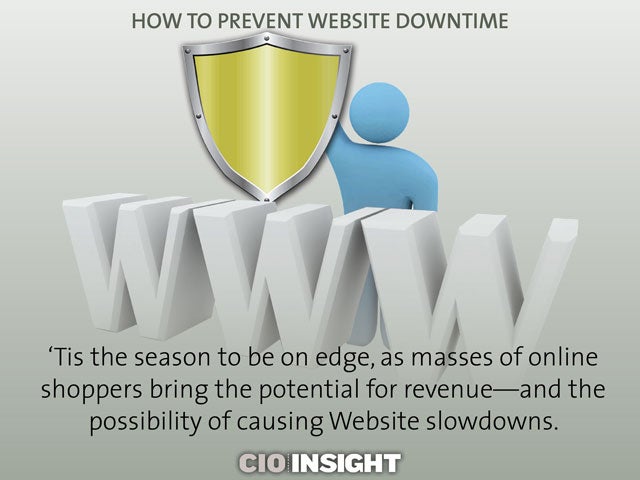
How to Prevent Website Downtime
 How to Prevent Website Downtime
How to Prevent Website Downtime
‘Tis the season to be on edge, as masses of online shoppers bring the potential for revenue—and the possibility of causing Website slowdowns.
 Understand Your Audience
Understand Your Audience
Be aware of whom your audience is, rather than making decisions based on outdated assumptions. The more you understand your audience, the more you can ensure that your infrastructure is aligned to avoid downtime.
 Questions to Ask
Questions to Ask
Ask yourself: Which geographic regions do visitors come from? Is your web strategy sufficient to reach them? How much traffic comes from mobile visitors? Do you hand mobile traffic the same way you do wire traffic?
 Partner Wisely
Partner Wisely
Good partners ensure that customers connect to a website quickly, easily and consistently, so it’s vital to find the right match for your specific needs.
 Choosing Vendors
Choosing Vendors
Look for partners who carefully monitor their networks and alert you when problems arise.
 Be an Enforcer
Be an Enforcer
Service-level agreements define the minimum performance standards a provider must meet in terms of speed, latency and availability. Enforce them to get the most out of partners.
 SLAs Are Nonnegotiable
SLAs Are Nonnegotiable
Service level agreements usually are not negotiable, so be familiar with your agreement terms and monitor external networks to hold providers accountable.
 Don’t Put Your Eggs in One Basket
Don’t Put Your Eggs in One Basket
Don’t rely on one content delivery network or cloud provider to connect with customers. A single endpoint limits the ability to redirect traffic; there is no backup solution in case of outages, hijacks or disruption. Consider multiple data centers, cloud providers and CD ends.
 Monitor Internally and Externally
Monitor Internally and Externally
Monitoring external networks can provide insights into how customers connect to your company. If the data center goes down or a cloud provider has slowdowns, you can route traffic to another center.
 Extend Security Beyond Your Firewall
Extend Security Beyond Your Firewall
Looking beyond your firewall can help you mitigate against DNS-based DDoS attacks, BGP hijacks and DNS cache poisoning.
 Plan for Human Error
Plan for Human Error
Create a safe operating environment and avoid downtime by routing traffic around data centers that are undergoing updates. In other words, isolate data centers that are in flux to protect your uptime.